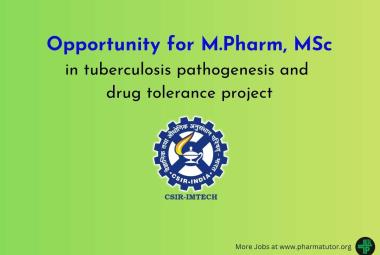The question of why we age is one of the most fascinating questions for humankind, but nothing close to a satisfactory answer has been found to date. Scientists at the Leibniz-Institut für Molekulare Pharmakologie in Berlin have now taken one step closer to providing an answer.
[adsense:336x280:8701650588]
They have conducted a study in which, for the first time, they have shown that a certain area of the cell, the so-called endoplasmic reticulum, loses its oxidative power in advanced age. If this elixir of life is lost, many proteins can no longer mature properly. At the same time, oxidative damage accumulates in another area of the cell, the cytosol. This interplay was previously unknown and now opens up a new understanding of ageing, but also of neurodegenerative diseases such as Alzheimer's or Parkinson's.
Each cell consists of different compartments. One of them is the endoplasmic reticulum (ER). Here, proteins which are then secreted e.g. into the bloodstream, such as insulin or antibodies of the immune system, mature in an oxidative environment. A type of quality control, so-called redox homoeostasis, ensures that the oxidative milieu is maintained and disulphide bridges can form. Disulphide bridges form and stabilise the three-dimensional protein structure and are thus essential for a correct function of the secretory proteins, e.g. those migrating into the blood.
Equilibrium thrown off balance
Scientists at the Leibniz-Institut für Molekulare Pharmakologie in Berlin have now shown, for the first time, that the ER loses its oxidative power in advanced age, which shifts the reducing/oxidising equilibrium – redox for short – in this compartment. This leads to a decline in the capacity to form the disulphide bridges that are so important for correct protein folding. As a consequence, many proteins can no longer mature properly and become unstable.

[Using genetically encoded sensors this study shows that the opposing redox state in ER lumen and cytosol is altered during ageing and upon disruption of proteostasis. The resulting redox imbalance can spread across tissues.
* Genetically encoded redox sensors report on tissue? and compartment?specific redox state in C. elegans and HeLa cells.
* Young animals have an oxidized ER that changes towards more reducing conditions during ageing, whereas the cytosol is reducing in young animals and becomes oxidizing with the progression of ageing.
* Proteotoxic challenges such as the inhibition of the proteasome or protein aggregates provoke a similar response and also act in a trans?compartmental manner.
* The organellar redox homeostasis is regulated across tissues and responds to proteotoxic challenges in a distal tissue. © FMP]
Although, it was already known that increased protein misfolding occurs with the progression of ageing, it was not known whether the redox equilibrium is affected. Likewise, it was not known that the loss of oxidative power in the ER also affects the equilibrium in another compartment of the cell: in reverse, namely, the otherwise protein-reducing cytosol becomes more oxidising during ageing, which leads to the known oxidative protein damage such those caused by the release of free radicals.
"Up to now, it has been completely unclear what happens in the endoplasmic reticulum during the ageing process. We have now succeeded in answering this question," says Dr. Janine Kirstein, first author of the study, which has been published in EMBO Journal*. At the same time, the scientists were able to show that there is a strong correlation between protein homoeostasis and redox equilibrium. "This is absolutely new and helps us to understand why secretory proteins become unstable and lose their function in advanced age and after stress. This may explain why the immune response declines as we get older," the biologist explains further.
Stress has the same effects as ageing
The researchers also demonstrated the decline of the oxidative milieu of the ER after stress. When they synthesised amyloid protein fibrils in the cell, which cause diseases such as Alzheimer's, Parkinson's or Huntington's disease, they set the same cascade in motion. Apart from this, they were able to show that amyloids that are synthesised in a certain tissue also have negative effects on the redox equilibrium in another tissue within the same organism. "Protein stress leads to the same effects as ageing," explains Kirstein. "Our findings are thus not only interesting with regards to ageing, but also concerning neurodegenerative diseases such as Alzheimer's."
For their experiments, the team of researchers used nematodes - an established model system for investigating ageing processes on a molecular level. Since the nematode is transparent, the researchers were able to use fluorescence-based sensors in order to measure oxidation in the individual cell compartments. It was thus possible to track precisely in the living nematode how the redox condition changes with advancing age. In addition, the influence of protein aggregation on the redox homeostasis was investigated in cultivated cells of human origin. The data were fully consistent with those from the nematode.
Using the findings to identify new diagnostic biomarkers
"We gained a lot of insight, but have also learned that ageing is much more complex than previously assumed," stresses the biologist Kirstein. Thus, for example, the mechanism of the signal transduction of protein folding stress to the redox equilibrium – both within the cell from one compartment to another and also between two different tissues – remains completely unclear.
Nevertheless, research of ageing has taken a major step forward as a result of the findings from Berlin, particularly since it promises a practical benefit. The redox equilibrium may serve as a basis for new biomarkers for diagnosing both ageing and neurodegenerative processes in the future. Janine Kirstein: "The approach is less likely to be useful for therapeutic purposes at present, but the development of diagnostic tools is certainly conceivable."
The project is a cooperation between laboratories from Berlin, Chicago, Kyoto and Munich.
Refrence: Forschungsverbund Berlin e.V. (FVB)
Journal: Janine Kirstein, Daisuke Morito, Taichi Kakihana, Munechika Sugihara, Anita Minnen, Mark S Hipp, Carmen Nussbaum?Krammer, F Ulrich Hartl, Kazuhiro Nagata, Richard I Morimoto; Proteotoxic stress and ageing triggers the loss of redox homeostasis across cellular compartments; The EMBO Journal (2015); DOI 10.15252/embj.201591711







